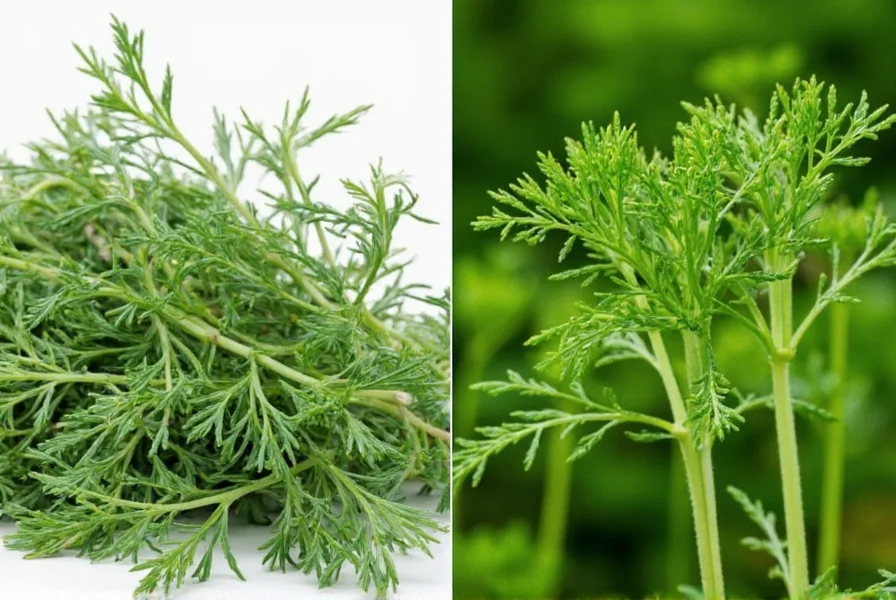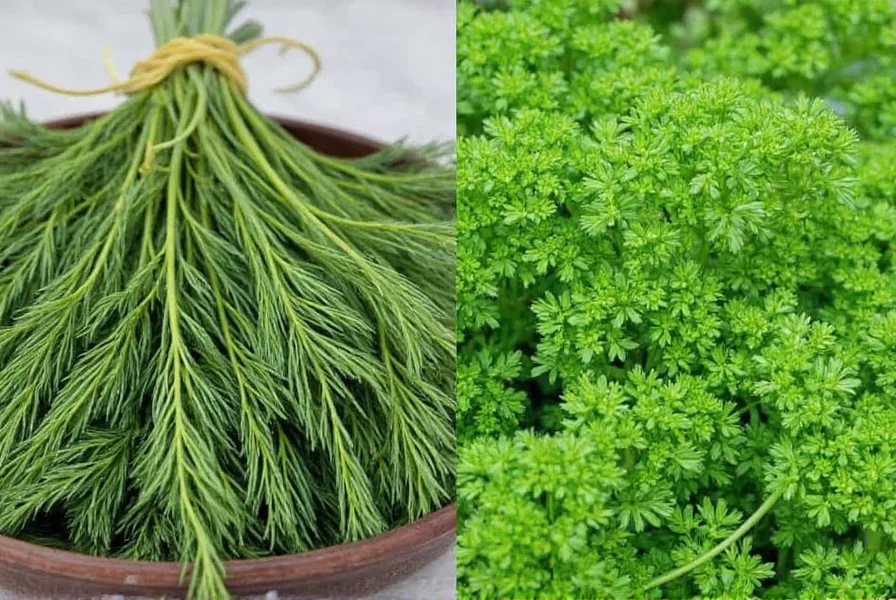Dill and dill weed come from the same plant (Anethum graveolens), but they are distinct in form and usage. Fresh dill refers to the vibrant green herb, while dill weed is the dried version. This guide explains the key differences, substitution ratios, and best practices for using each in cooking to maximize flavor.
Table of Contents
- What Exactly Is Dill?
- Dill vs. Dill Weed: What’s the Difference?
- Flavor Profiles Compared
- Culinary Uses and Best Practices
- Buying Guide: Choosing Between Dill and Dill Weed
- Top 5 Tips for Using Dill and Dill Weed
- Final Thoughts
- Frequently Asked Questions
What Exactly Is Dill?
The word "dill" typically refers to the fresh herb that comes from the plant Anethum graveolens. This feathery green herb has long, delicate fronds and a bright, grassy flavor with hints of anise and citrus. Fresh dill is commonly used in pickling, seafood dishes, salads, and creamy sauces like tzatziki.
In culinary contexts, fresh dill is prized for its aromatic freshness and vibrant color. It's often added at the end of cooking to preserve its flavor and texture.
Dill vs. Dill Weed: What’s the Difference?
When you see "dill weed" in stores, especially in dried form, it's not referring to a weed at all — it's simply the dried leaves of the dill plant. Here's how they differ:
| Feature | Dill (Fresh) | Dill Weed (Dried) |
|---|---|---|
| Plant Part | Fresh leaves and stems | Dried leaves |
| Flavor Intensity | Mild, bright, herbal | More concentrated, slightly earthy |
| Shelf Life | Short (3–5 days refrigerated) | Long (6–12 months sealed) |
| Cooking Use | Add at end of cooking | Add early for depth |
| Texture | Tender and moist | Dry and crumbly |
So technically, dill weed is just dried dill leaves. But because they’re processed differently, they behave differently in recipes.
Flavor Profiles Compared
Fresh dill brings a crisp, clean taste with subtle licorice notes and a refreshing bite. Think of it as the mint of the savory herb world — light and aromatic.
Dill weed (dried), on the other hand, has a more muted and mellow flavor. The drying process intensifies some of the woody characteristics, giving it a slightly bitter edge and making it less volatile than fresh dill.
When to Use Which:
- Fresh Dill: For cold dishes like salads, dips, fish, or anything served raw or lightly cooked.
- Dill Weed: For hearty soups, stews, baked goods, or any dish that needs a subtle but lingering herbal note.
Culinary Uses and Best Practices
Knowing how and when to use each form of dill can make all the difference in your dish. Here are some classic examples of where each shines:
Recipes That Love Fresh Dill
- Homemade pickles (especially cucumber dill pickles)
- Smoked salmon or gravlax with dill cream sauce
- Green salads with lemon vinaigrette
- Greek tzatziki or Middle Eastern yogurt dips
Recipes That Work Best with Dill Weed
- Chicken pot pie with herb crust
- Potato salad with mayo and mustard base
- Bread doughs (like sourdough or focaccia)
- Slow-cooked beef stew or lamb curry
Buying Guide: Choosing Between Dill and Dill Weed
If you're shopping for dill products, you'll encounter a range of options from fresh bundles to dried seasonings. Here's a breakdown of what to look for depending on your needs.
Fresh Dill Buying Tips
- Look for vibrant green fronds without wilting or yellowing.
- Avoid bunches with slimy stems or brown spots — these are signs of old age.
- Opt for organic if possible, especially if you’ll be eating it raw.
- Buy in small quantities unless you plan to use it daily — fresh dill doesn't keep well.
Dill Weed Buying Tips
- Choose finely chopped dill weed rather than coarse bits for even distribution.
- Sealed packaging helps maintain potency longer; avoid open bins if possible.
- Check expiration dates — potency diminishes after 6 months.
- Consider brands with natural anti-caking agents instead of artificial preservatives.
| Product | Best For | Features | Target Audience |
|---|---|---|---|
| Fresh Dill Bunches | Rubs, garnishes, raw dishes | Vibrant green, fragrant, tender leaves | Home cooks, gourmet chefs |
| Dried Dill Weed | Baking, stews, pickling | Long shelf life, easy storage, consistent flavor | Busy cooks, meal preppers |
| Dill Essential Oil | Infusions, DIY recipes, aromatherapy | Highly concentrated, versatile | Hobbyists, natural health users |
| Dill Seed | Spiced breads, pickles, spice blends | Bitter, nutty, caraway-like flavor | Spice enthusiasts, fermenters |

Top 5 Tips for Using Dill and Dill Weed
- Don’t overcook fresh dill. Add it toward the end of cooking to preserve flavor and color.
- Substitute wisely. One teaspoon of dried dill weed equals about one tablespoon of fresh dill.
- Pair with complementary flavors. Try dill with lemon, garlic, yogurt, fennel, or carrots.
- Grow your own! Dill grows easily in containers and attracts beneficial insects like ladybugs.
- Store fresh dill properly. Keep it in a glass of water in the fridge, covered with a plastic bag.
Final Thoughts
So, is dill the same as dill weed? Technically yes — they come from the same plant. But functionally, they offer different textures and flavor profiles that suit distinct culinary uses. Whether you’re tossing together a quick summer salad or simmering a cozy soup, knowing which version of dill to use can elevate your dishes from good to unforgettable.
Keep both forms in your pantry and refrigerator, and don’t be afraid to experiment. Who knows — you might discover a new favorite combination that becomes your signature touch in the kitchen.

Frequently Asked Questions
Is dill the same as dill weed?
Technically, yes — both come from the same plant (Anethum graveolens). However, "dill" typically refers to the fresh herb (leaves and stems), while "dill weed" specifically denotes the dried leaves. They have distinct flavor intensities and culinary applications due to their different processing methods.
Can I substitute fresh dill for dill weed in recipes?
Yes, but with adjustments. Use 1 tablespoon of fresh dill to replace 1 teaspoon of dried dill weed. Remember that fresh dill should be added at the end of cooking for maximum flavor, while dried dill weed benefits from longer cooking times to release its oils.
Why is dried dill called "weed" if it's not a weed?
The term "weed" here is an old culinary term meaning "herb" or "plant" (not a noxious plant). "Dill weed" simply refers to the leafy part of the dill plant that's been dried for storage and use. It's a historical naming convention that's persisted in cooking terminology.
What's the difference between dill weed and dill seed?
Dill weed is the dried leaf of the plant, while dill seed comes from the plant's flower heads. Seeds have a stronger, more pungent, caraway-like flavor and are commonly used in pickling and breads, whereas dill weed offers a milder herbal note for sauces and salads.
How should I store fresh dill to maximize freshness?
Place the stems in a glass of water (like a bouquet), cover loosely with a plastic bag, and refrigerate. Change the water every two days. Properly stored, fresh dill lasts 5-7 days. Never wash it before storage, as excess moisture accelerates spoilage.










 浙公网安备
33010002000092号
浙公网安备
33010002000092号 浙B2-20120091-4
浙B2-20120091-4